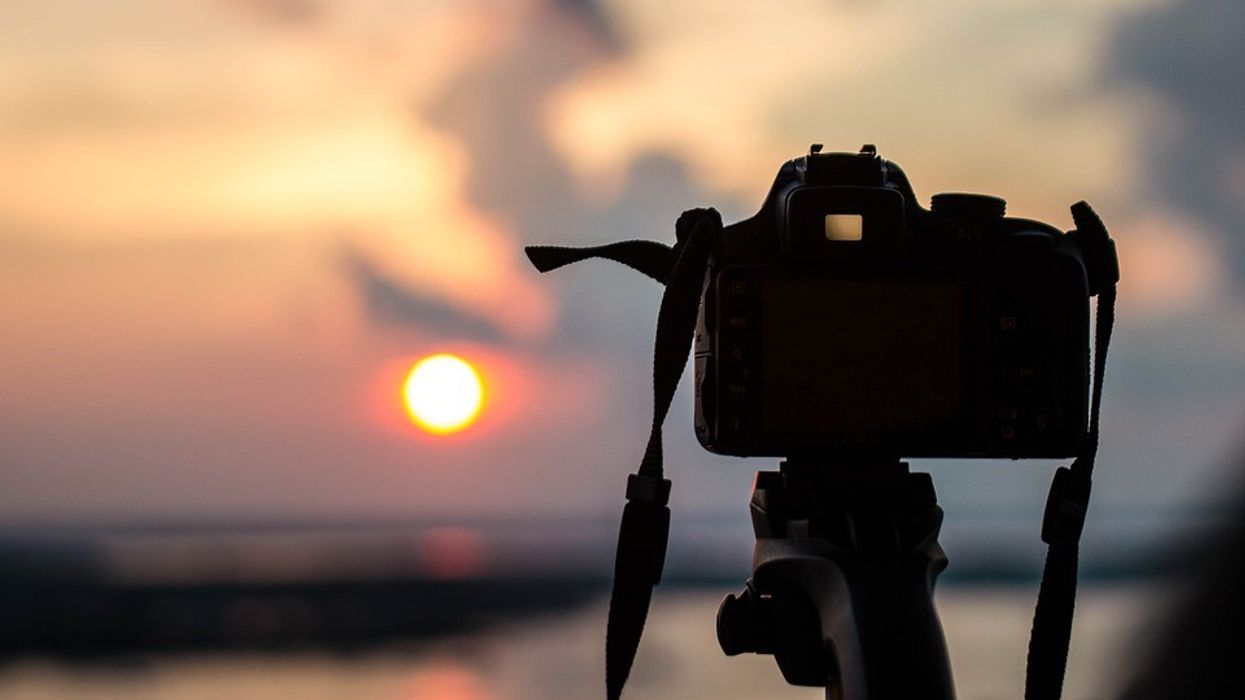Watch: A Beginner's Guide to Camera Angles and Shot Sizes
Learn the basics on setting up your camera for a wide variety of different shots, as well as how shot sizes and camera angles affect us emotionally.

All filmmakers have to start their cinematic education somewhere, and when it comes to learning how to shoot, a great place to start would be with composition and framing. Though not the most technically complex concept (for the most part), composition tends to get a little hairy when it comes to unpacking the mental and emotional effects it can have on audiences. So, here's Darious Britt to not only list a bunch of essential shot sizes and camera angles, but to also explain what they can communicate to your audience.
So, when it comes to shot sizes you've got your master/establishing, extreme wide, wide, medium, medium close-up, close-up, and extreme close-up shots. These are the basic building blocks of composition that allow you to move through your scene smoothly without it getting too boring visually. The basic rule of thumb (though you don't have to follow it) is that you start off with an establishing shot and as the scene goes through its natural story arc (most if not all scenes should have those) you push in closer, wide to medium to medium close-up to close-up. To put it simpler, when the emotional energy in your scene is low, shoot from further away (wide/medium), and then as it rises, move in closer (medium close-up, close-up).
Britt talks about several other shots, like the insert, cut away, over-the-shoulder, and two shot, which aren't defined by shot size, but rather composition or content. Let's take a closer look at a few of them.
Cut aways are good if you need to draw attention to a specific object within the scene (like Morpheus showing Neo the blue and red pills). Over-the-shoulder shots are used all the time for dialog scenes. POV shots are a staple of horror films, but they can be used whenever you want to put your audience in the shoes of a character. There are plenty of other shots that
When it comes to camera angle, you've got your basic positions: eye-level, low angle, and high angle. There are others, like bird's (overhead) and worm's eye, but they're much less common. The concept that is extremely important to understand when it comes to camera angle is perspective and the emotional and psychological effect it has on the viewer. Eye-level shots are considered neutral and don't have much if any emotional impact on the audience. Conversely, low and high angle shots do: low angle shots, shots captured below the subject's eyeline, give them the appearance of power and dominance, while high angle shots, shots captured above the subject's eyeline, give them the appearance of powerlessness and submissiveness.
If you want a slightly more advanced explanation of how camera angles affect emotions, check this out. This scene from Pulp Fiction is a pretty good example of how high and low camera angles, subtle though they may be, work to show who's dominant in a scene.
And this scene from Pulp Fiction shows you how a neutral camera angle can help support the narrative. After Jules decides to stop killing people after "the miracle" (him and Vincent living after being shot at a bunch of times at almost point blank range), he finds himself and other restaurant patrons being held up at gunpoint by Honey Bunny and Pumpkin. Now, before this scene takes place, Jules is a, well, a bad motherfucker (it says so on his wallet) and is in the business of being a dominant and intimidating hitman. We see this reflected in several scenes (like the one above) in the way he's shot at a low camera angle. But in this scene in the diner, we see him and Pumpkin shot from a neutral angle, which gives neither character any power over the other, and Honey Bunny shot from an extreme low angle, giving her the appearance of power.
Now, let's unpack this. It makes sense that Honey Bunny is shot from a low angle, because she has a gun pointed at Jules' head; she has power, a false sense of power, but power none the less. However, it's interesting that Jules and Pumpkin are shot from a neutral camera angle considering how much more adept of a killer Jules is compared to Pumpkin. So, why isn't Jules shot from a low angle since he clearly is in control of the situation? It's because of his choice to live a moral and humble life, as well as his desire to lead Pumpkin away from his wicked path. It's almost like Quentin Tarantino is saying that Jules' control doesn't come from his aggression and intimidation, which would be illustrated with a high angle, but from his newfound enlightenment and morality, which was illustrated with a neutral angle.
There is plenty to learn when it comes to composition and framing, especially when it comes to how they affect audiences emotionally. So, next time you're watching a film or TV show, pay close attention to how each character is shot (camera angle, shot size, lens).
Source: D4Darious











